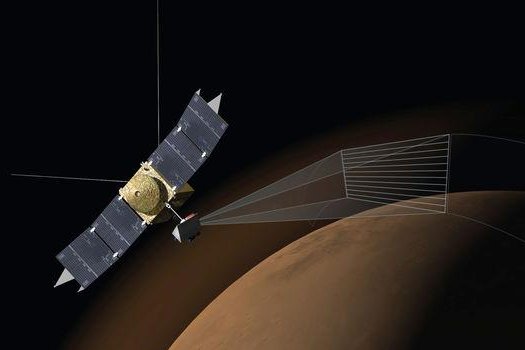WASHINGTON, Nov. 7 (UPI) -- When Comet Siding Spring passed worryingly close to Mars, NASA and other space agencies were forced to hide their orbital probes on the opposite side of the Red Planet -- safe from the space debris barreling through the thin Martian atmosphere.
But as the probes and rovers sheltered in place, they were able to make a number of scientific observations and measurements, as well as collect samples -- studying and documenting, for the first time, the collision between a passing comet's rocky dust tail and a planet's atmosphere in real time.















